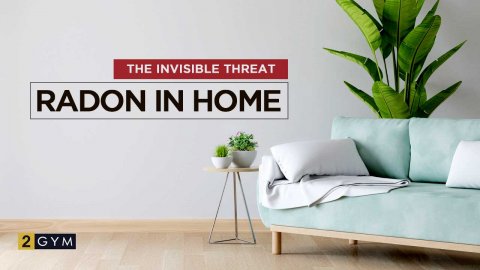Radon (Rn) is a radioactive chemical element that is an inert gas.
Sources of Radon
- Forms during the decay of uranium, which is present in rocks and soil.
- Released from the ground, radon enters the air.
- The concentration of radon in indoor air can be 10-20 times higher than outdoors.
Radon can enter our homes through various sources. One of the main sources of radon is building materials, such as granite and red brick.
Radon can also enter our homes through soil and water.
The deeper the source from which the water is extracted, the more radon it may contain.
Therefore, artesian wells and deep wells can be particularly hazardous in this regard.
Radon and Its Impact on Health
Radon is the second leading cause of lung cancer after smoking.
The higher the concentration of radon, the greater the risk of developing cancer.
Doctors strongly recommend testing radon levels in residential spaces and taking measures to reduce it.
Methods of Measuring Radon Levels
There are several methods for detecting radon in the home. One of the most common methods is using radon dosimeters.
Dosimeters allow continuous measurement of radon levels in the air over a certain period, usually from several days to several months.
Another method is using radon detectors. These devices also measure the concentration of radon in the air, but they are often used for short-term measurements, such as over a few days.
Additionally, there are professional services that can conduct radon testing in your home using specialized equipment.
Areas in the Home Where Radon May Be Present
Radon can accumulate in various parts of the home, especially those below ground level. These may include basements, cellars, as well as underground utility spaces.
It is also important to note that radon can enter through cracks in walls and floors, so any gaps and cracks in the home can serve as entry points for radon.
Signs of High Radon Levels in the Home
High levels of radon in the home may go unnoticed without special measurements, but there are some signs that may indicate its presence:
- Presence of radon in neighboring homes or buildings in your area.
- Occurrence of unexplained symptoms such as fatigue, headaches, or breathing problems, especially when indoors.
- Issues with ventilation in basement areas or other enclosed spaces.
However, for an accurate determination of radon levels, special measurements with dosimeters or detectors are necessary.
Experiments and Results
Several experiments were conducted to test the effectiveness of various materials in filtering radioactive dust.
Cotton wool was found to be the most effective material for trapping radon decay products.
It was also found that the airflow rate affects the amount of dust trapped.
How to Reduce Radon Levels in the Home
Radon levels in residential spaces can vary significantly depending on various factors such as the type of building materials, the presence of wells, and the condition of ventilation.
Some homes may have elevated radon levels, which can be very hazardous to health.
Therefore, it is important to conduct regular checks and take measures to reduce radon levels in the home. There are several methods for reducing radon levels in the home.
Improving Ventilation
Radon accumulates in enclosed spaces, so it is important to ensure good ventilation in the home.
- Regularly ventilate rooms (especially basements).
- Install exhaust fans in areas where radon accumulates (e.g., in the basement or above the stove).
- Check the draft in chimneys and flues.
Sealing
Radon can enter the home through cracks and fissures in the foundation, walls, and floors. All gaps and cracks should be sealed with sealants, foam, or other suitable materials.
Special attention should be paid to places where pipes and wires pass through.
Installation of Radon Mitigation System
In some cases, improving ventilation and sealing may not be sufficient to reduce radon levels to a safe level. In such cases, a radon mitigation system needs to be installed.
The radon mitigation system pumps contaminated air from under the foundation and expels it outside the property.
Use of Building Materials with Low Radon Content
When constructing a new home or renovating an existing one, it is advisable to use building materials with low radon content.
- Concrete with low cement content.
- Brick made of fired clay.
- Construction blocks made of aerated concrete or gas concrete.
Conclusion
So, radon is a radioactive gas that could be present in your home. It is the second leading cause of lung cancer and can enter indoor spaces through various sources such as building materials and water.
Testing radon levels in residential spaces is an important step in maintaining your health and safety.
Be vigilant and conduct regular checks to ensure a safe environment for you and your family.

















Log in with ( Sign Up ? )
or post as a guest
Be the first to comment.